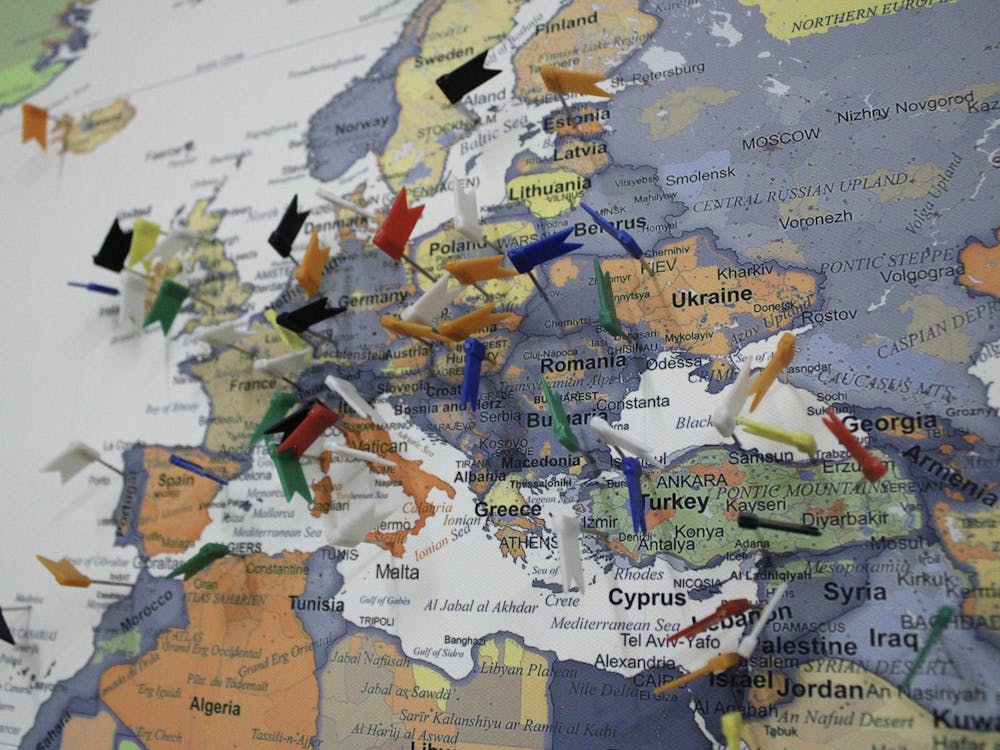THROUGH me the way to the suffering city, Through me the way to the eternal pain, ...
Abandon every hope, you who enter here.
These words, from Canto III of "The Inferno," might well have hung above the entrance to the University's foreign language laboratory during its pre-renovation days. Not even Dante himself could have dreamed up a more horror-inspiring facility, with its inevitably jammed cassette players, torn electrical cords and broken headsets.
But thanks to the swift-thinking development team at ASCIT (College of Arts and Sciences Center for Instructional Technology), the Bat Cave-like lab has received a digital facelift that will benefit thousands of University students. It is up to the instructors to take advantage of the new facilities by formulating creative lessons.
In 1996, the University hired ASCIT Director Rachel Saury to assess and update the lab's decaying facilities. Based on her recommendations and those of her development team, the College readily footed the $1.1 million bill to install digital lab equipment. In a personal interview, Saury credited the College with "having the vision" to pursue the project to its present state.
"We needed to have leading-edge technology in the language lab" in order for the University to stay competitive with other schools, she said. Certainly ASCIT's efforts have far-reaching ramifications for both students and foreign language faculty alike.
Sooner or later, most College students must trek down to the lab's infamous subterranean hollow to complete reams of oral assignments. Anyone who has paid a visit to the lab in recent years can attest to its formerly desperate state.
Beneath the yellowish dazzle of fluorescent lights, students wearily hunched over the outdated Tandberg audio cassette players, fingers poised over fast-forward and rewind keys - or, more often than not, the empty holes where those keys once resided. It took forever to get through the shortest exercise, and sighs of frustration often punctuated students' long hours of monotonous work.
Because the lab had no interactive computing facilities, language professors found themselves limited in the quality and variety of activities they could assign. The result: all the boring workbook exercises in Christendom.
Thankfully, ASCIT technicians worked hard this summer to overhaul the lab. According to an ASCIT press release, the outdated, toothless cassette decks have been replaced by 58 sparkling Dell computers with zip drive capabilities. Students can record oral work on a zip disk, hand the disk to an instructor, and have the instructor record corrections and commentary on the same file.
In this way, the new language lab will allow professors and students better interaction in the oral medium. Instructors also can place news broadcasts and excerpts from foreign-language films onto a Digital Video Server (DVS), which students, in turn, can access from their workstations. There are plans to install foreign language word processing and e-mail applications onto the new Dells so that anyone with foreign-language computing needs can be served.
If the lab continues to update its foreign language software applications, the new digital technology can serve the University for years, Saury said.
Her team is encouraging foreign language professors to experiment with the lab's new capabilities. ASCIT recently published an illuminating packet of suggested in-class exercises and skill builders, all of which can help instructors utilize the lab's new features. In addition, ASCIT announced in a newsletter that its technicians will host a series of fall lectures and roundtables in order to discuss the benefits of these new advancements.
The primary benefits of ASCIT's renovations, however, ultimately belong to University students. The scope of possibility that ASCIT has opened up will make classes a lot more interesting and, yes, fun for students practicing all foreign language disciplines. With the recently installed digital equipment, it's possible to gain the most from every oral assignment. Instead of flying solo on pronunciation exercises, students can receive one-on-one help from instructors. As Saury noted, "the more students can be exposed to real-life target language, the better."
Thanks to ASCIT's efforts, that target seems just a little more attainable.
(Kiki Petrosino's column appears Wednesdays in The Cavalier Daily.)






